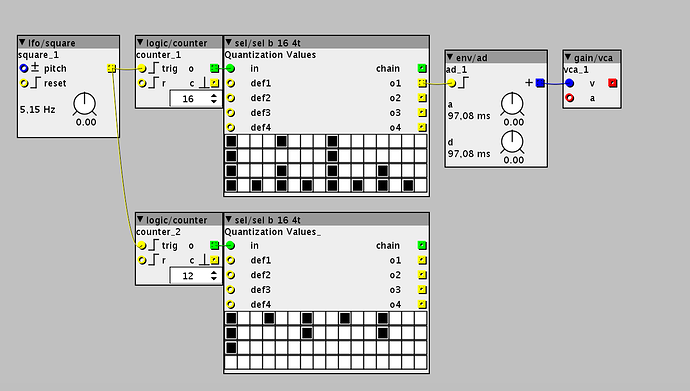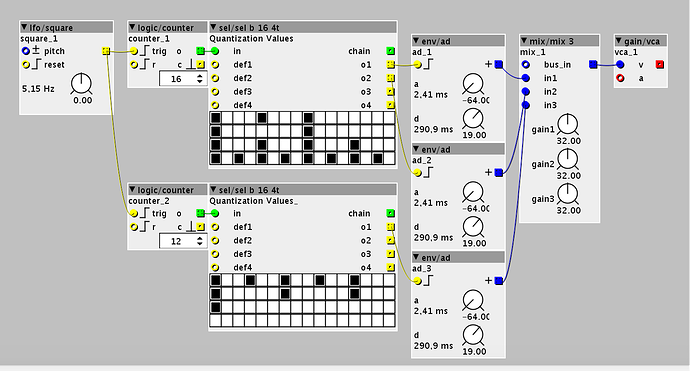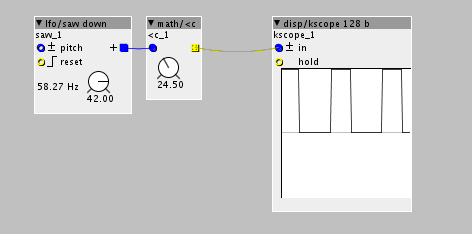Really enjoying the axoloti - still very much a beginner at the coding and patching. I am stuck on something I want to do.
I want to apply a tremolo effect to various audio signals which I have been doing using a lfo (blue out) into a VCA. I would like to run some of the trem effects proportionally slower/faster than others. For example a bassy sound 3 times slower than a mid sound, a higher sound 4 times faster..and obviously control it all from the same lfo ( or other source). Have played around with the logic counters but not sure how to then use one to control a lfo rate.
Also would be good to be able to adjust the duty cycle of the trem effect in an audible way. Shorter bursts of sound , longer gaps ...or visa versa. Like on the boss slicer pedal.
Any pointers as to what to try would be appreciated.
richard


 I'm using them for similar stuff and also for modulating filters, so you get some kind of seuquenced auto wah.
I'm using them for similar stuff and also for modulating filters, so you get some kind of seuquenced auto wah.


 I have tried the lfo/sawdown then math [larger than]c with the k lowpass filter and I like it a lot ( and yes I want the dial). Thanks Technobear and Sir P - lots of uses for this.
I have tried the lfo/sawdown then math [larger than]c with the k lowpass filter and I like it a lot ( and yes I want the dial). Thanks Technobear and Sir P - lots of uses for this. I remember it from a patch I made with recording audio into tables and having it played back by several tables at different speeds. I did this by multiplying the the frequency of lfos that drive the tables before the blue inlet. I wanted to have only different octaves, but I remember also getting intervalls of the harmonic scale multiplying with math *c, wich would be what you need in order to get clean triplets and dotted notes. (or even more experimental polyrhytmhs like quintuplets etc)
I remember it from a patch I made with recording audio into tables and having it played back by several tables at different speeds. I did this by multiplying the the frequency of lfos that drive the tables before the blue inlet. I wanted to have only different octaves, but I remember also getting intervalls of the harmonic scale multiplying with math *c, wich would be what you need in order to get clean triplets and dotted notes. (or even more experimental polyrhytmhs like quintuplets etc)